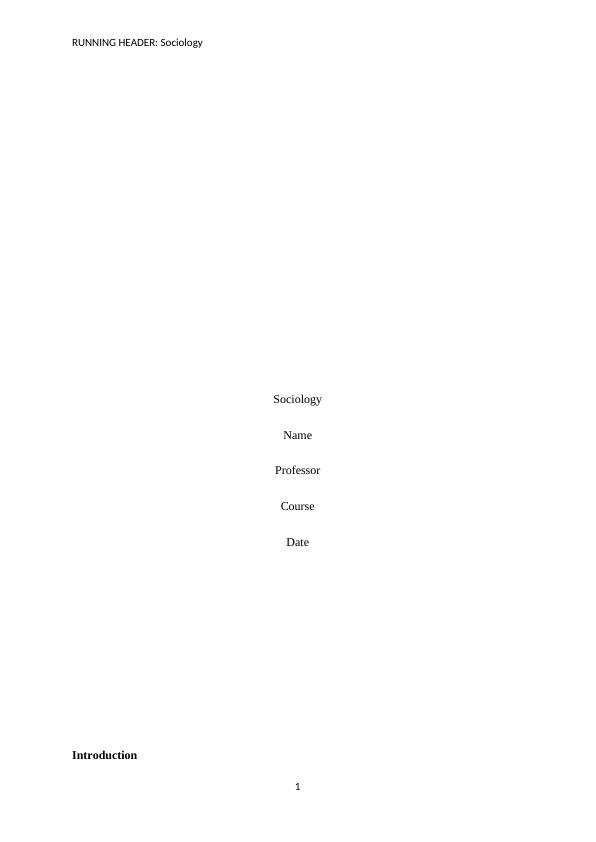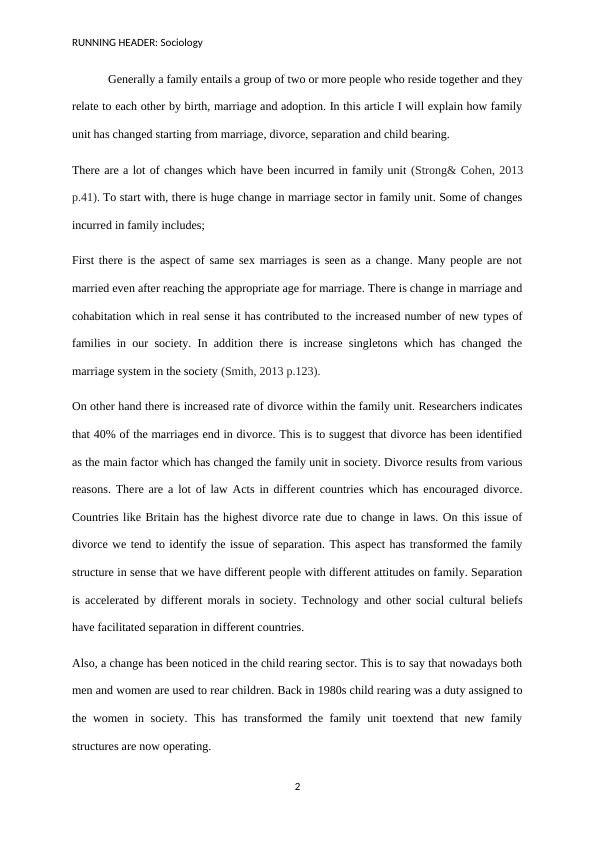Changes in Family Structure: Perspectives from Functionalism, Feminism, Marxism and Interactionism
8 Pages1901 Words124 Views
Added on 2023-06-03
About This Document
This article discusses the changes in family structure, including marriage, divorce, separation, and child rearing. It also explores the perspectives of functionalism, feminism, Marxism, and interactionism on family and society. The article highlights the similarities and differences between these perspectives.
Changes in Family Structure: Perspectives from Functionalism, Feminism, Marxism and Interactionism
Added on 2023-06-03
ShareRelated Documents
End of preview
Want to access all the pages? Upload your documents or become a member.
Sociology Research Australia 2022
|3
|534
|26
Impact of Divorce on Family, Child and Childcare Setting
|5
|983
|307
Family Law or Personal Law Case Study 2022
|15
|3795
|20
Essay on the Sociology of Family
|8
|2272
|541
Families in Canada
|8
|931
|72
introduction to sociology
|5
|447
|35



